Travel Grants Scheme (2019)
In 2019, The Heritage Alliance (in partnership with the British Council) launched an International Travel Grant Scheme: providing dedicate funding to enable heritage professionals to develop mutually beneficial international projects and partnerships for their organisations.
An Evaluation Report was produced following the completion of the Scheme, which showcases key findings from all of the case studies and makes a number of recommendations for similar schemes in the future. You can read the report here.
Following the completion of their projects, the thirteen beneficiaries wrote up short reports on their experiences, which can be read below.
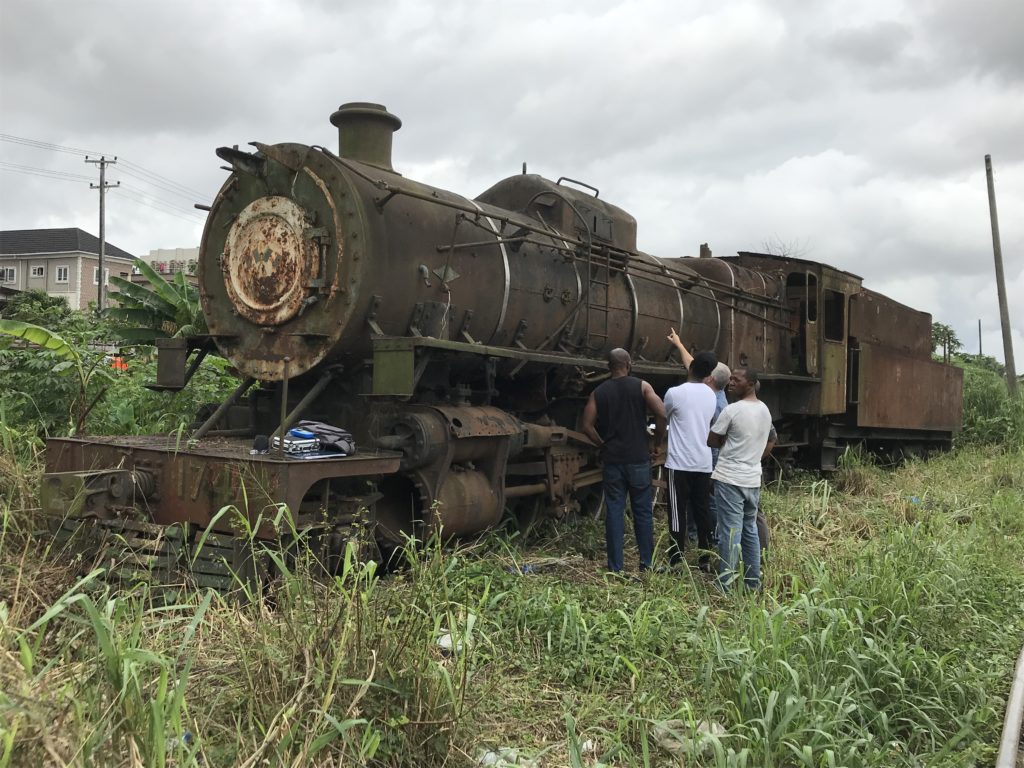
Photograph of a railway heritage park at the Ebute-Metta National Railway Museum of Nigeria – one of the international heritage sites that was engaged with through the support of the Travel Grant Scheme.

Kelly O’Reilly, Milton’s Cottage Trust (CIO)
Kelly O’Reilly is the Business Director for Milton’s Cottage Trust. She used the funding from the British Council to explore the potential support in India for an International Friends group for Milton’s Cottage.
The trip enabled Kelly to visit a range of literary organisations in India, where interest in John Milton’s work is on the rise, including the historic Asiatic Society of Mumbai and the Poetry Society of India in Delhi. She was able to develop a network of connections with writers, archivists, educators and organisers, which will support future collaboration, including international exhibitions, conferences and talks.
Struck by the impact of Milton’s work upon India’s literary scene, and the shared literary heritage across cultures, Kelly reported, “We look forward to developing a wider knowledge and understanding of Milton’s international legacy with the active assistance of our new partners and friends.”
Kelly’s full report can be read here, in addition to her blog.

Cara Jones, Archaeology Scotland
Cara Jones is the Adopt-a-Monument Project Manager for Archaeology Scotland. She travelled to Bergen in Norway to learn more about their approach to the conservation and presentation of heritage assets.
Cara and her colleague Phil Richardson met with senior members of Hordaland Fylkeskommune for a day seminar and trips to two heritage sites. They were able to observe how visitor experience could be enhanced onsite, and see how partnerships with local communities could spread understanding of heritage and archaeology.
Reflecting on the trip’s impact, Cara reported how the visit, “allowed us to continue building a working relationship with the team at Hordaland Fylkeskommune Culture Department and share innovative case studies with the communities we work with in Scotland.”
A full report of the visit can be found here.

Jim Hall, Nottingham UNESCO City of Literature
Jim Hall is a Programme Manager for Nottingham UNESCO City of Literature. The British Council funding allowed him to travel to Granada, Spain, to engage with heritage projects there and connect with the team at Granada UNESCO City of Literature.
During his time in Granada, Jim made genuine connections with like-minded educators and advocates. He was able to discuss best practice directly with these professionals, and observe the importance of shared ideas and practical approaches in action at heritage sites and during the Granada Book Fair.
In Jim’s words: “This visit has galvanised our mission of building a better world with words through international collaboration… After this visit I feel confident to take the lead in devising future heritage projects with a global vision”
For Jim’s full report, click here. To find out more about Nottingham UNESCO City of Literature, click here.
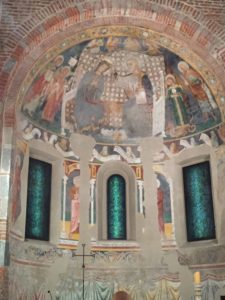
Kate Hickmott, Lewes Priory Trust
Kate Hickmott is the Education Officer for the Lewes Priory Trust. She used her British Council grant to visit other parts of the Cluniac network in Italy and France exchange ideas on engagement, education and the legacy of the Cluniacs.
This important work has allowed a contemporary relationship between Cluniac sites to flourish along the line of historical links. Moreover, the discussions that emerged have raised important questions for the Lewes Priory Trust and other other Cluniac sites in the UK over how to create a benchmark of historical understanding, and use this inform future funding bids.
Sy Morse-Brown, the Chairman of the Trust, commented that:
“This visit has produced so much more than we anticipated. It has widened our horizons regarding the possibility of information exchange and research opportunities. It has kindled greater enthusiasm to develop wider knowledge of the Cluniac network with the active assistance of our new European contacts.”
To read Kate’s full report, click here. To find out more about Lewes Priory, click here.
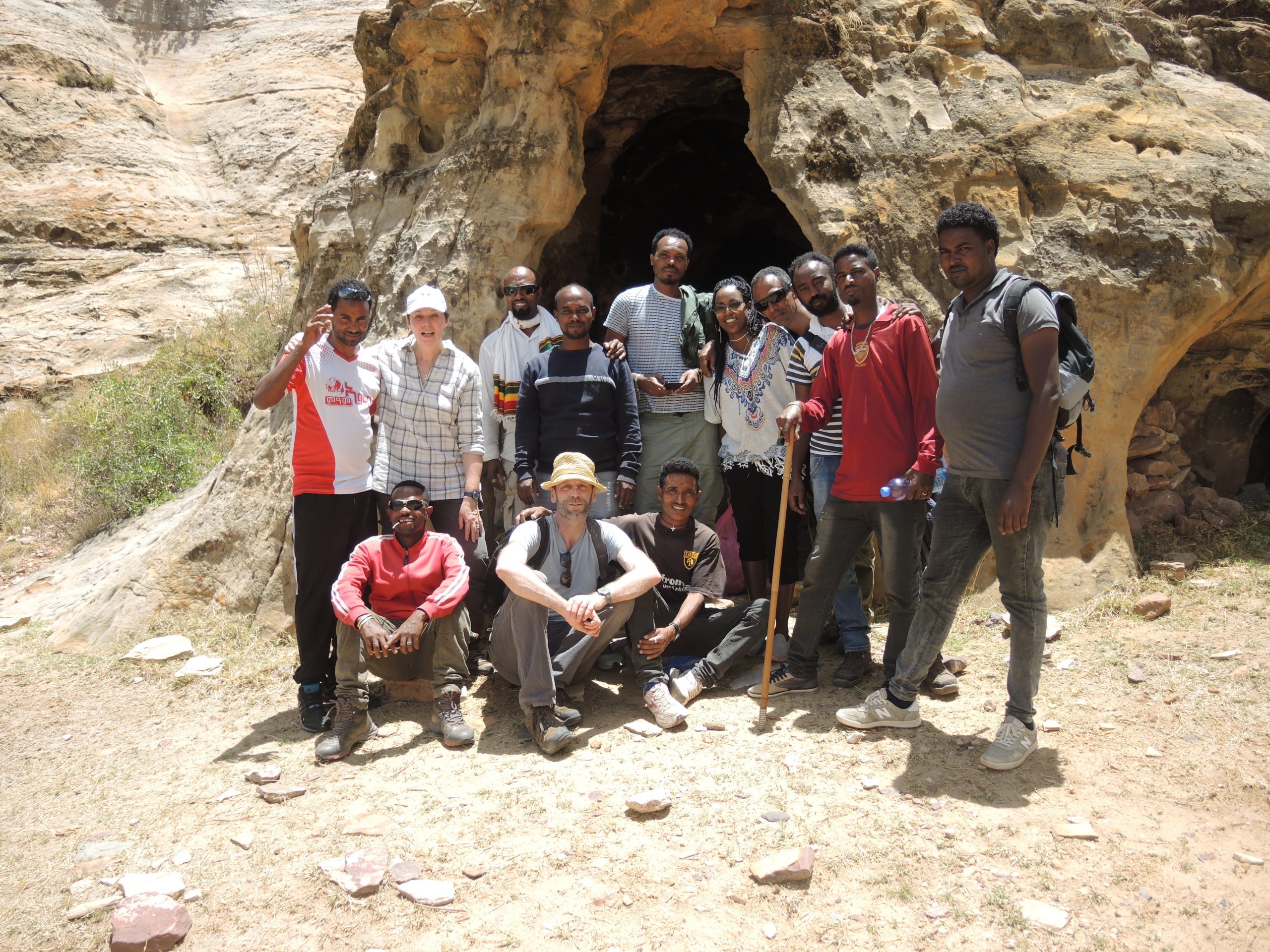
Lisa Shekede and Stephen Rickerby for The Ethiopian Heritage Fund (EHF) and The Tigray Bureau for Culture and Tourism
The EHF works with the Ethiopian Church and the Ethiopian Ministry of Tourism and Culture to promote the conservation of early Ethiopian churches. In this case, the funds awarded were used to deliver a targeted four-day conservation training course to guides in Tigray.
The course was highly successful, enabling the tour guides to meet as a professional group and examine their roles as the interface between tourists and the sites that they visit. As Lisa and Stephen put it:
“With over 30 years’ teaching experience in the conservation profession, the enthusiasm and gratitude shown by the course participants was unprecedented, and left a deep impression.”
Since the EHF’s course, guides have been able to maintain contact through social media. The EHF will provide relevant publications and information to the tour guides, and the Tigray Culture and Tourism Bureau has agreed to help organise future courses.
A full report on the EHF’s work in Tigray can be found here. To view the EHF’s website, click here.
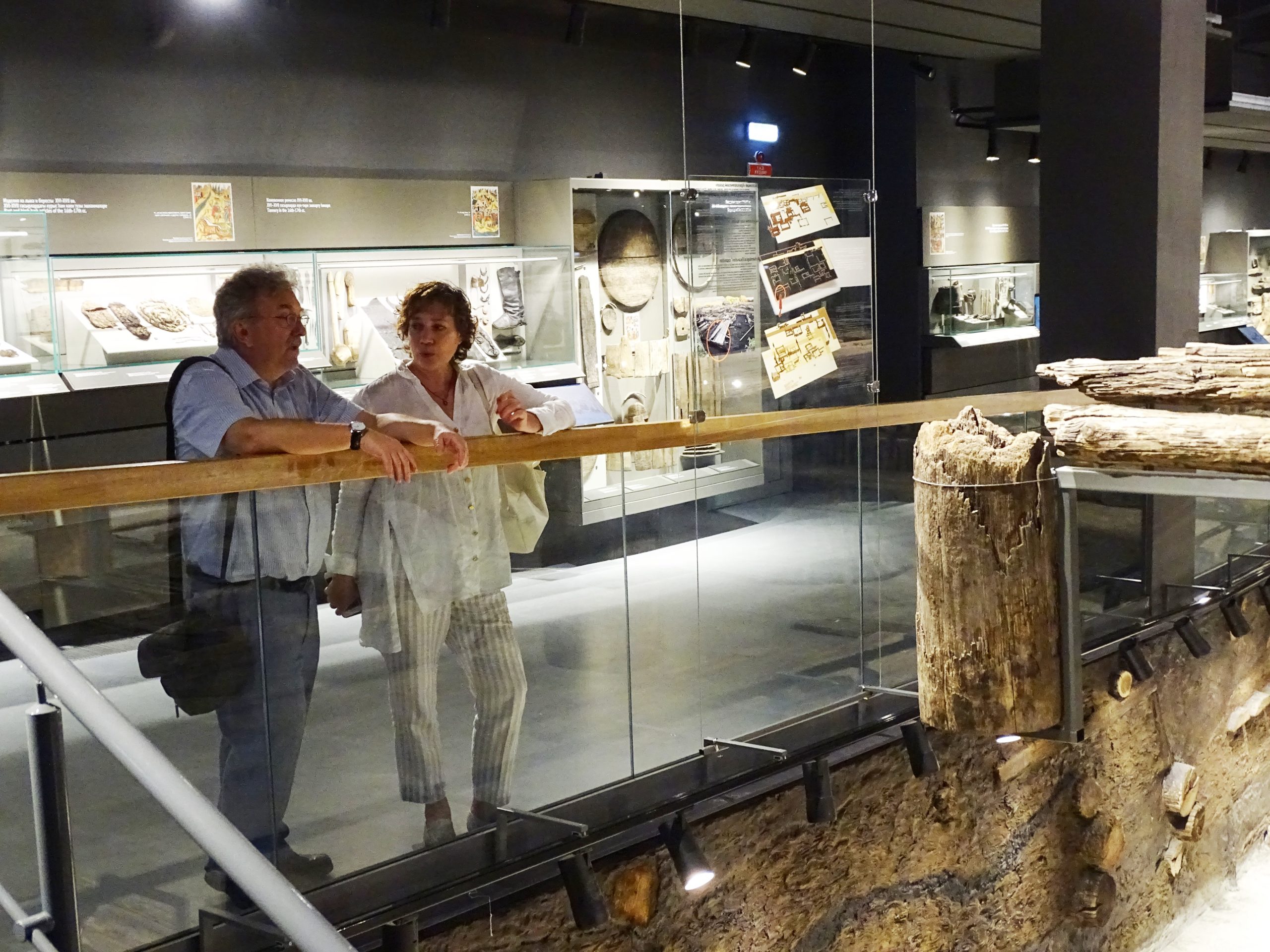
Peter Lakin, Council on Training in Architectural Conservation (COTAC)
Peter Lakin is a Senior Lecturer in BIM for Heritage at the Council on Training in Architectural Conservation. The funds awarded by the British council, allowed Peter to travel to Kazan, Tatarstan in Russia, to engage with Kazan State University of Architecture and Engineering and various other heritage organisations.
This visit allowed Peter to establish a working relationship with staff at the University, as well as with the Deputy Minister of Culture for Tatarstan, Svetlana Persova. During his time in Kazan he was able to draw comparisons between the education systems of the UK and Russia and think about how both countries use the ICOMOS Guidelines and Venice Charter. He was also able to present lectures and advise a student about submitting her project in a forthcoming competition.
In Peter’s own words “the student projects I saw have given me ideas on how to adjust the teaching and assessment of our students’ work… making them far more professional and work-ready.” And his visit allowed him to make “many personal links within the heritage sectors of both Kazan and the UK as a direct result of this visit, which will hopefully provide more opportunities for similar future projects.”
To read Peter’s full report, click here. To find out more about COTAC, click here.

Sarah Rees, Dyfed Archaeological Trust (DAT)
DAT is a Welsh Archaeological Trust which works to advance the education of the public in archaeology and to protect, record and interpret all aspects of the historic environment. The British Council grant allowed DAT in partnership with the Unloved Heritage group in Llanelli, Wales to visit their twin town Agen in France.
The trip was a great experience for the group of youngsters who had to opportunity to explore some French heritage. The group compared the important industrial histories of their home town Llanelli, and their twin town Agen.
As Sarah explains: “Our young people now have a greater understanding of the relationship between Llanelli and Agen and have discussed and debated what they believe is Unloved Heritage both in Llanelli and Agen.”
To read Sarah’s full report click here. To find out more about DAT click here.

Hannah McLean, Museum of British Colonialism
Hannah McLean is the Engagement and Social Media Manager for the Museum of British Colonialism. She used the British Council funding awarded to her by the Heritage Alliance to visit pertinent sites in Kenya relating to the Mau Mau Emergency -specifically those in Nyeri- and meet with potential partners at Karatina University.
This funding allowed Hannah to carry out crucial, challenging fieldwork and fully immerse herself in the sites at Nyeri. In this way she was able to gain a deep understanding of the contemporary context of the work carried out by the Museum; context vital for her own role as an Engagement Manager. In her own words:
“Field research is key to keeping our Museum running, relevant, and educational, and the building and maintenance of our network is essential in not only helping to undertake field research, but disseminate and share this knowledge.”
To see Hannah’s full report, click here. To view the Museum of British Colonialism’s website, click here.

Trish Pemberton, Friends of the Stockton & Darlington Railway
The Friends are a group of people who care deeply about the railway heritage of the North East of England and want to see the 1825 Stockton and Darlington Railway line receive the recognition and the protection it deserves as the start of the modern railway network from which all modern passenger railways across the world developed.
The Chair of the Friends of the Stockton & Darlington Railway, Trish Pemberton, embarked on a Heritage Alliance funded trip to the United States to build relationships between American institutions and the Stockton & Darlington Railway. Trish described this as a real “meeting of minds”. This included forming new links with the Japan America Society.
You can read her blog about her trip and the connections the Friends are making with their fellow organisations in the United States here.

Mike Heyworth, Council for British Archaeology
The Council for British Archaeology is an educational charity working throughout the UK to involve people in archaeology and to promote the appreciation and care of the historic environment for the benefit of present and future generations. The trip enabled Executive Director, Mike Heyworth, to visit the Society for American Archaeology and the Archaeological Institute of America in Washington DC and Boston.
Reflecting on the impact of his visit, Mike said: ‘we took key initial steps to create a transatlantic partnership of leading archaeology organisations with shared interests’ and ‘it has made me more aware of the similarities between archaeological membership and advocacy bodies in different parts of the world and the opportunities to learn from each other’.
This visit created opportunities to meet face to face and establish the basis for meaningful relationships which can then be developed remotely.
Mike’s report of the trip can be found here.

Peter Hinton, Chartered Institute for Archaeologists
The Chartered Institute for Archaeologists (CIfA) is the leading professional body representing archaeologists working in the UK and overseas. This British Council funded visit to Bern allowed CIfA to have liaison meetings with the European Association of Archaeologists, Deutsche Gesellschaft für Ur- und Frühgeschichte and Institute of Archaeologists of Ireland.
Their time in Switzerland cemented and developed several partnerships to mutual advantage and identified new opportunities for CIfA to promote high professional standards and strong ethics in archaeological practice, to maximise the benefits that archaeologists bring to society.
Peter Hinton, the Chief Executive, commented that ‘it has increased my cultural awareness of different archaeological, political and business viewpoints and practices, better equipping me to promote CIfA values and support archaeological colleagues globally’.
Peter’s full report can be read here.

Pawlett Brookes, Serendipity
Serendipity is an internationally connected social enterprise that actively changes the UK artistic and cultural landscape with an innovative and inspiring high-quality programme. Serendipity fosters innovative new work from artists, both emerging and established, bringing diversity to the forefront of cultural experiences for all.
Pawlett Brookes, the CEO and Artistic Director, brilliantly summarised: "With thanks to the Heritage Alliance and British Council, the international visit to attend the Rex Nettleford conference in Jamaica has been an invaluable experience both for the professional connections and research links and for the recognition that Serendipity’s current work is now receiving at an international level. This is something that we are only just beginning to comprehend but has opened doors to enable us to further research, document and share the contribution of the Caribbean to the dance ecology on an international scale".
You can read Pawlett’s full report here, as well as her account of the Rex Nettleford conference.
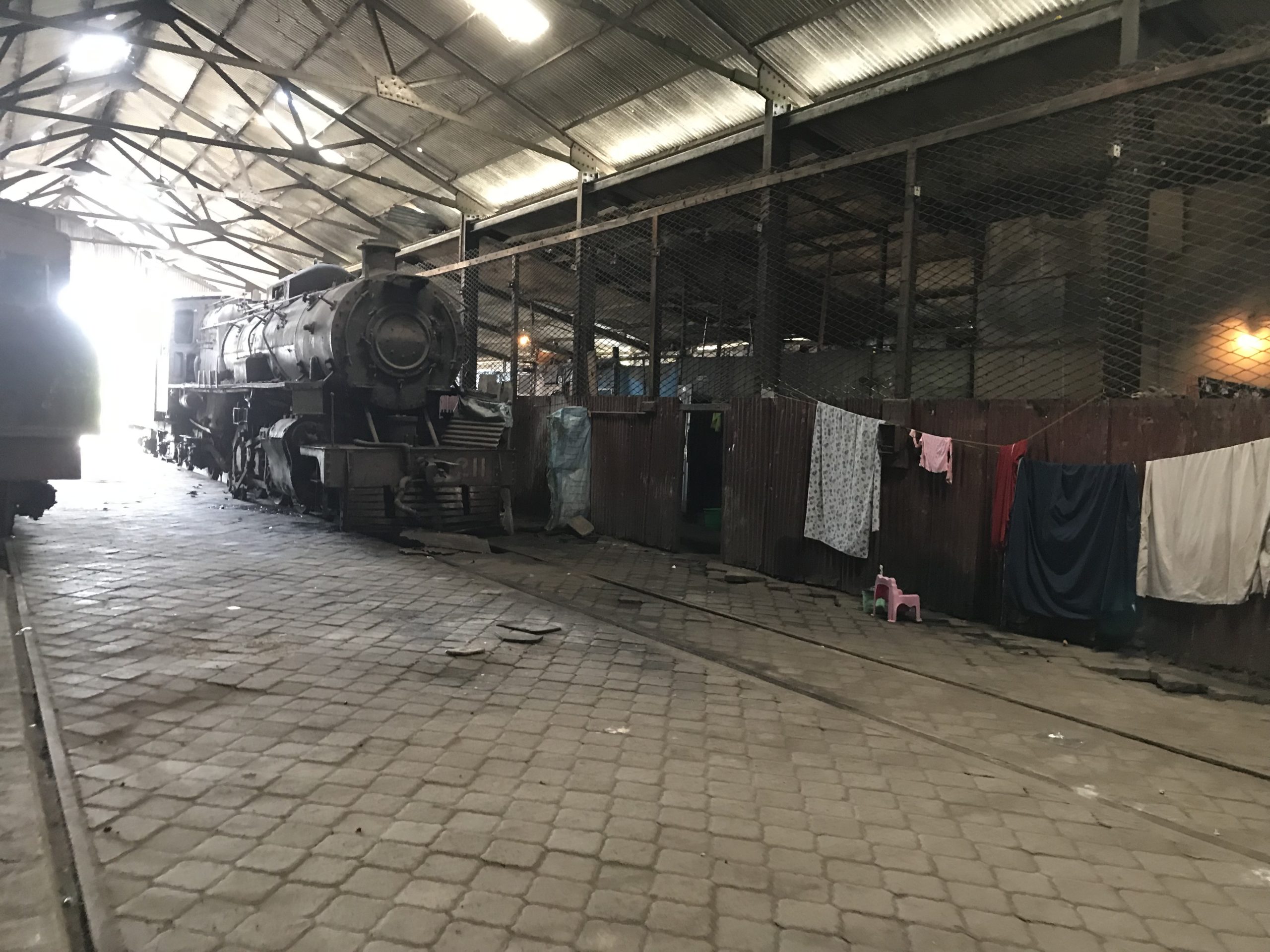
Helen Ashby, Friends of the Sierra Leone National Railway Museum
The purpose of the visit was to work with the NRC/Legacy 1995 Joint Committee on the exploration of the development of a railway heritage park at Ebute-Metta National Railway Museum of Nigeria.
Summarising the impact of the visit, Helen Ashby, the Chair, said that it "has created a level of focus for Legacy 1995, validating the work that they have already done, setting the context for moving forward to deliver a National Railway Museum for Nigeria and has enabled the Friends of SLNRM to gather ideas and contacts in support of their work in Sierra Leone". She continued, "the visit has broadened my network of contacts in West Africa, given me new insights into the cultural heritage context in which I work and inspired me to do more".
To read Helen’s blog from her trip, click here. To read more about the Sierra Leone National Railways Museum, visit their website.


